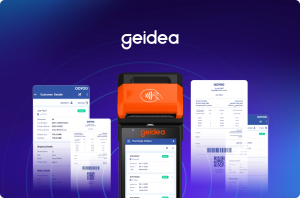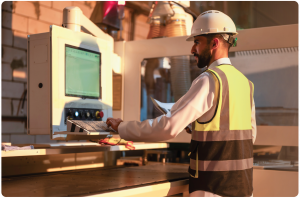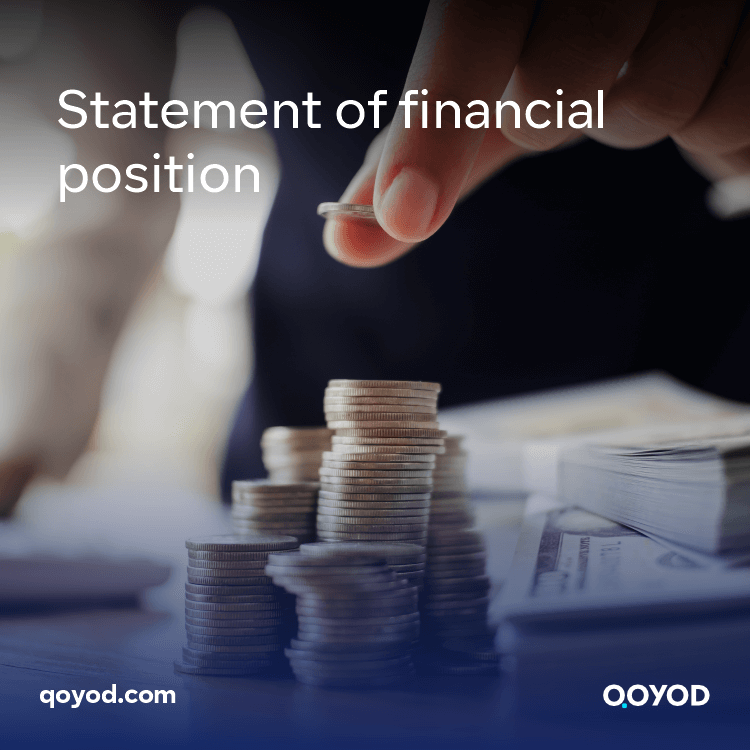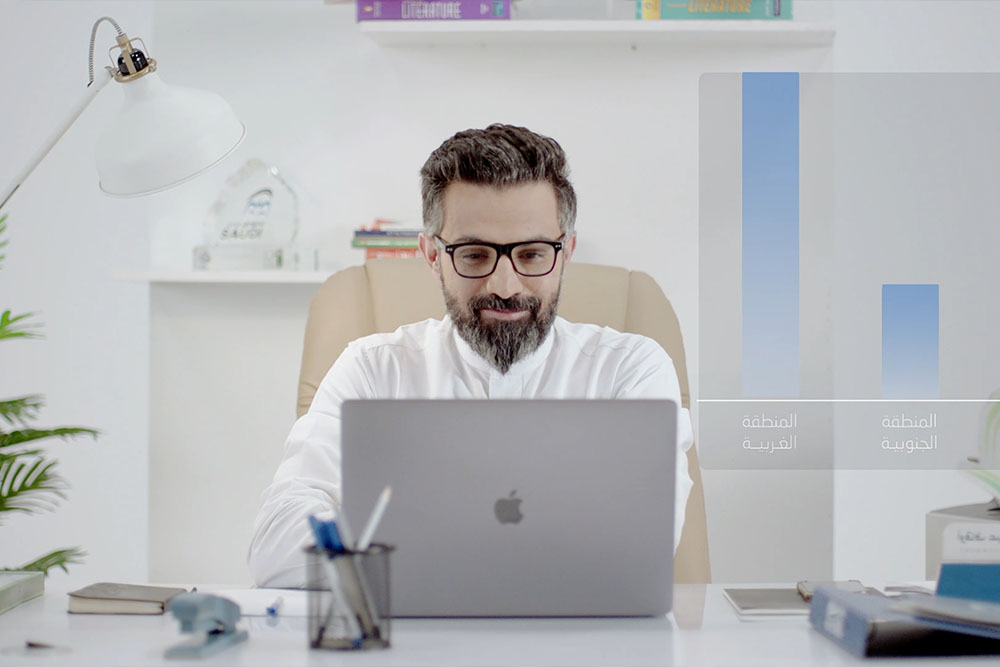Excerpt
The cash flow statement provides a comprehensive picture of the company’s financial condition and helps evaluate its financial performance and sustainability. Therefore, companies must analyze and present it regularly to shareholders and other stakeholders to make sound financial decisions.
Suggested Title
- Statement of financial position: what is it and what are its components?
- Statement of financial position: a window into the world of economic power
- Statement of financial position: What is the difference between it and the income statement and balance sheet?
The statement of financial position aims to reveal the financial condition of the company, and it is considered one of the most important financial documents that reflects the health and stability of the company. It is not just a set of numbers and balances, but rather an accurate depiction of the company’s current financial situation, what it owns, and what it owes. When you read it, you will find a simple, but strong, accounting equation that governs it, which is that assets are equal to liabilities in addition to shareholders’ ownership rights; Therefore, this equation reflects the principle of financial balance, as we must have a balance between the company’s resources and its obligations, in addition to shareholders’ rights, and it is worth noting that it clearly and systematically displays the assets that the company owns, such as cash, buildings, and equipment, as well as intellectual property rights. It also reveals financial liabilities, such as debts and future payment obligations, and by comparing assets with liabilities, we can get a clear understanding of how much debt a company has and its ability to bear it.
What is the statement of financial position?
It is one of the main financial statements that provides an integrated picture of the company’s financial position at a specific point in time. This list displays information about the company’s assets, liabilities, and shareholders’ ownership equity.
It is worth noting that it is an important tool for investors, managers, financial institutions, and regulatory authorities. To understand and evaluate the company’s financial performance, read this list. It can determine how much wealth a company has, how it mixes it, as well as its ability to meet its financial obligations.
Elements of the statement of financial position
The statement of financial position contains elements, the most important of which are the following:
Assets
It includes all property and financial resources that produce expected future economic benefits for the company and includes:
- Short-term assets, such as cash, accounts receivable, and inventory.
- Others are long-term, such as real estate, equipment, and investments.
liabilities
It includes all financial liabilities that require the payment of sums of money, the provision of services, or the payment of debts in the future, and includes:
- Short-term liabilities, such as debts payable and accrued costs.
- Others are long-term, such as bank loans and bonds.
Shareholders’ equity
The equity of the company’s stakeholders includes paid-up capital and reserved and written profits. It is worth noting that shareholders’ equity is the difference between total assets and total liabilities and represents the company’s source of financing.
Moreover, the statement of financial position follows the principle of the accounting equation, where the total assets must be equal to the total liabilities and shareholders’ equity. Thus, this reflects the concept of keeping the accounting equation balanced and ensuring that all of the company’s financial resources are reliable.
Components of the statement of financial position
The statement of financial position is an important tool used in financial reports to clarify the financial condition of the company, and it includes a set of basic components that reflect the various financial aspects of the company, which are as follows:
Assets
A company’s financial assets reflect the value of the property it owns, which can include cash, accounts payable, investments, equipment, real estate, inventory, etc.
Assets are divided into two main parts:
Fixed assets include long-term property, such as land, buildings, and equipment.
Other currents include cash, accounts payable, and inventory.
shareholders’ equity
This component reflects a company’s net equity, also known as shareholders’ equity or owners’ equity, and includes paid-up capital, accumulated profits, reserves, and any other special rights of shareholders. Therefore, this component reflects the net financial value of the company’s ownership.
liabilities
Liabilities reflect a company’s financial liabilities that are payable and include outstanding loans and business debts, as well as salaries, taxes, and accrued expenses. Liabilities are usually classified into current liabilities and long-term liabilities. Do not forget that this component reflects the financial liabilities that the company must settle in the future.
Expenses
It reflects the detailed expenses of the company and includes: production costs, wages, social insurance, rents, advertisements, as well as maintenance, etc. The expenses contribute to calculating the company’s net profit or loss.
Income statement
The income statement reflects a company’s revenues and expenses over a specific period of time and includes sales revenue, royalties, interest, and any other income generated from the company’s activities.
The difference between the income statement and the financial position
They are financial reports that aim to provide a comprehensive overview of the company’s financial position, and although they display financial information about the company, they focus on different aspects and provide diverse information.
Statement of financial position
It reflects the overall picture of the company’s financial position in the same period in which the income statement was prepared. The statement of financial position includes information about the assets, liabilities, and shareholders’ equity of the company and displays the assets owned by the company, such as cash, investments, and property. It also displays the accrued liabilities, such as debts and the company’s liabilities, in addition to displaying the shareholders’ equity that the company owns.
income Statement
It is a financial report that reflects the company’s profits and losses and financial returns during a specific period of time, usually one financial year. It is worth noting that it aims to show the revenues achieved from sales of products or services, production and operations costs, administrative and financial expenses, as well as taxes and the company’s net profits.
Format of the balance sheet and income statement
income statement
It is a financial tool that displays the revenues and expenses achieved during a specific period of time, such as a month or a financial year, and aims to measure the company’s performance in achieving profit and determine the efficiency of the sales strategy followed and the quality of the business model.
The first form of the income statement can include only one step, as it displays total revenues and total expenses, while the multi-step form provides more precise details about sources of revenue, cost of sales, administrative and financial expenses, and taxes.
Balance sheet
On the other hand, the balance sheet list displays the value of assets and liabilities at a specific point in time, usually by the end of the fiscal year. This list deals with both types of assets: current and fixed, as it shows current assets such as cash, accounts payable, and inventory, while it displays fixed assets such as buildings and equipment, and it also includes liabilities and obligations that may appear in the form of loans, interest, or debts.
Example of a statement of financial position
Below is an example of a statement of financial position for a fictitious company called Cleopatra Limited:
| Assets | Note | SR | SR | ||
| Non-current assets at net book value (NBV) | |||||
| Property and equipment | 1 | 18000 | |||
| Vehicles | 1 | 56.250 | |||
|
|||||
| Non-current investment | 18000 | ||||
| Total non-current assets of the NBV | 92.250 | ||||
| Assets | |||||
| Inventory | 70.000 | ||||
| Dues | 2 | 89.110 | |||
| Advance payments | 1000 | ||||
| Bank | 62.490 | ||||
| 222.600 | |||||
| Total assets | 314.850 | ||||
| Owner’s equity and liabilities | |||||
| Capital: Ordinary shares | 80.000 | ||||
| retained earnings | 107.100 | ||||
|
|||||
| liabilities | |||||
| Non-current liabilities | |||||
| 6% bonds | 40.000 | ||||
| Current liabilities | |||||
| Trade payables | 63.500 | ||||
| Dues | 5200 | ||||
| Company tax is due. | 19.050 | ||||
| 87.750 | |||||
| Total shareholders’ equity and liabilities | 314.850
|
Depreciation policy
Cleopatra Limited depreciates non-current assets as follows:
- Property and Equipment: Straight-Line Method over 20 Years.
- Cars: reducing the balance method by 25% annually.
- Net Accounts Receivable: Accounts receivable are shown net after a 5% allowance for accounts receivable.
Suppose you would like to create a website design software company with an initial budget of 10,000 Saudi riyals. First of all, you must create a completely separate bank account for the company from your personal account. Once this account is created, the company’s assets will be equal to 10,000 Saudi riyals.
Assets
- Bank account: 10,000 Saudi riyals.
At this initial stage, the company does not have any debt. Therefore, the value of the money in the account (SAR 10,000) is yours, and it is also the same value as the initial financial investment you made.
| What I gain | What I own |
| What my company earns | What my company owns |
| What my company spends | Bank = 10,000 riyals |
| What’s left | What you owe to others |
liabilities
Rent: 1600 Saudi riyals per month.
The next step is to find a place to work and meet clients. Let’s say you decide to rent an office with a monthly rental cost of 1,600 Saudi riyals. So you should put this amount in the company’s monthly liabilities or expenses section, and since rent is a type of cost that the company incurs, we will put it in the appropriate section of the statement of financial position.
Rent
Once you pay the rent, you will still have SAR 8,400 of money available in the company account, meaning the bank account has lost SAR 1,600 at this point. Therefore, this loss appears in the profit and loss section of the statement of financial position.
Profit and loss: 1600 Saudi riyals.
profits and losses
In short, at this initial stage, after paying the rent, the company’s assets will be SAR 8,400, and the profits and losses will be SAR 1,600. Therefore, this reflects the company’s current financial situation after achieving some expenses and not yet achieving any revenues.
| What I gain | What I own |
| What my company earns | What my company owns
Bank = 10,000 Saudi riyals -1600 = 8400 Saudi riyals |
| What my company spends
Rent = 1600 Saudi riyals |
What you owe to others |
| What’s left is mine.
Profit and loss = 1600 Saudi riyals |
What’s left is mine.
Owner’s investment = 10,000 Saudi riyals What you won is 1600 Saudi riyals. = 8400 Saudi riyals |
First purchase
Suppose you made a sale and received 7,000 Saudi riyals. It is worth noting that this amount is added to the company’s account. Therefore, you have a bank balance of 15,400 Saudi riyals, and the sales are equal to 7,000 Saudi riyals.
profits and losses
Of course, this process will affect the company’s profit and loss statement. In the previous step, the amount of 1,600 Saudi riyals was deducted for rent, but now you have added 7,000 Saudi riyals from sales. Therefore, the profit and loss statement will be affected by these operations.
Operating costs
Second, let’s talk about other operating costs that affect the statement of financial position. Let’s say you hired a designer to create a logo for your new company, and you issue an invoice for SAR 10,000 that is paid within 30 days. That cost is an expense that the company incurs.
Design services
Therefore, this cost was recorded in the statement of financial position as SAR 10,000 in design services, and every time the company makes or spends profits, those operations will be reflected in the statement.
Company expenses
Until now, your company has had two types of expenses: the first is the rent that has already been paid, and the second is the designer’s wages that have not been paid yet. According to the agreement, it takes 30 days to pay the designer’s wages. Therefore, SAR 1,000 is owed to the company in accounts payable.
Financial position now
Let’s take a comprehensive look at the statement of financial position. Now, you have a bank balance of SAR 15,400 and debits of SAR 1,000 in accounts receivable. And therefore:
15400 minus 1000 = 14400 Saudi riyals.
If we return to the company’s initial account, where the cost was 10,000 Saudi riyals, when compared to the amount in the company’s account now, we get:
14,400 minus 10,000 = 4,400 Saudi riyals.
Therefore, 4400 Saudi Riyals is the amount of your company’s gross profit so far.
| What I gain | What I own |
| What my company earns
Sales = 7,000 Saudi riyals |
What my company owns
Bank = 5000 Saudi riyals 800 Saudi riyals = 4200 Saudi riyals + 3500 Saudi riyals = 7700 Saudi riyals |
| What my company spends
Rent = 1600 Saudi riyals Design services = 1000 Saudi riyals = 1300 Saudi riyals |
What you owe to others
Accounts payable = 500 Saudi riyals |
| What’s left is mine.
Profit and loss = 800 Saudi riyals 3500 Saudi riyals = 2700 Saudi riyals minus 500 Saudi riyals = 2200 Saudi riyals |
What’s left is mine.
Owner’s investment = 5000 Saudi riyals What you won = 800 Saudi riyals minus 3500 Saudi riyals = 2200 Saudi riyals |
Conclusion
By exploring the statement of financial position, we discover a world of enormous economic possibilities and opportunities. It represents a powerful tool for measuring and analyzing financial performance, making informed strategic decisions, and providing accurate information about assets, liabilities, and property rights. The financial position can reveal a comprehensive picture of the company or institution, and it is an indispensable reference for investors, managers, and regulatory authorities alike. It is worth noting that by analyzing the financial position, we can understand the company’s performance in the past and predict its future path. Thus, benefiting from accurate and up-to-date financial data allows us to make strategic decisions based on objective foundations and reliable information. It enables us to identify strengths and weaknesses, exploit opportunities, and verify the achievement of business objectives.
The strength of the financial position lies in its ability to be a bridge between the past and the future. So take full advantage of it by using the Qoyod accounting program. It is worth noting that the program also provides all its clients: electronic invoice systems, as well as point-of-sale systems, warehouses, customers, and so forth. Which makes it the best accounting program in the Middle East.
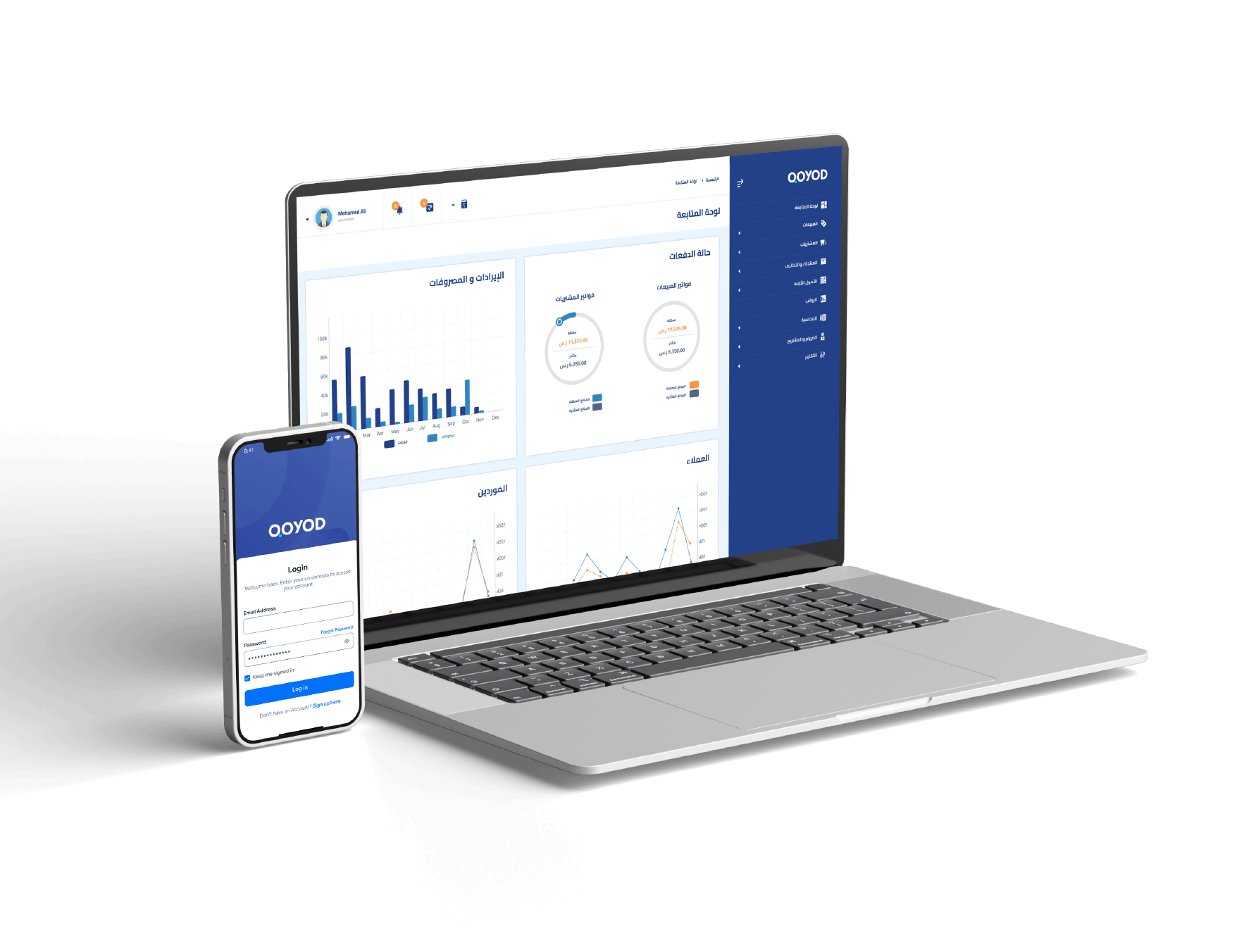
After knowing what the statement of financial position is and what its components and elements are, Try Qoyod now for free for 14 days. It is an accounting program that meets all your requirements.
Join our inspiring community! Subscribe to our LinkedIn page and Twitter to be the first to know about the latest articles and updates. An opportunity for learning and development in the world of accounting and finance. Don’t miss out, join us today!



